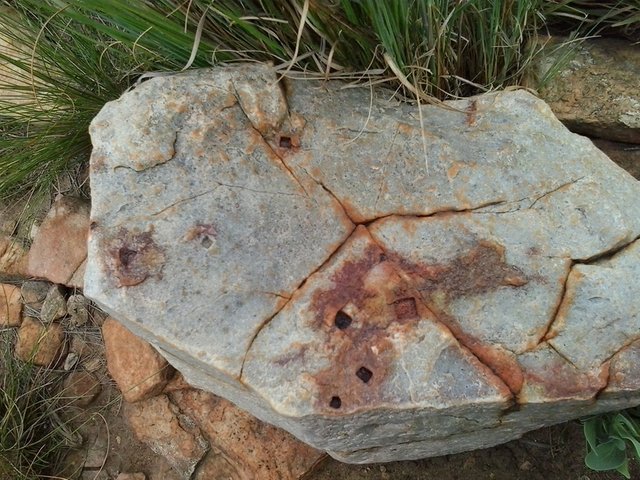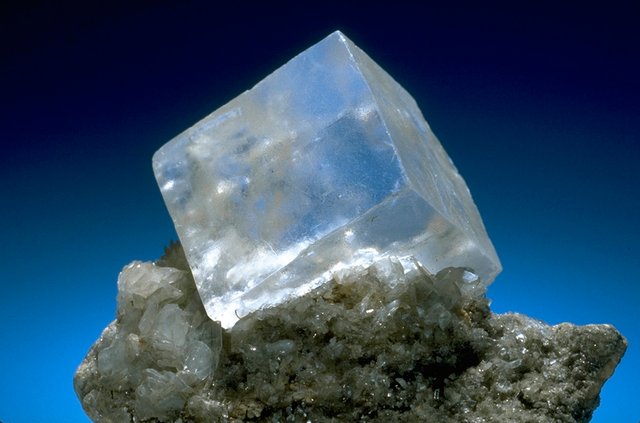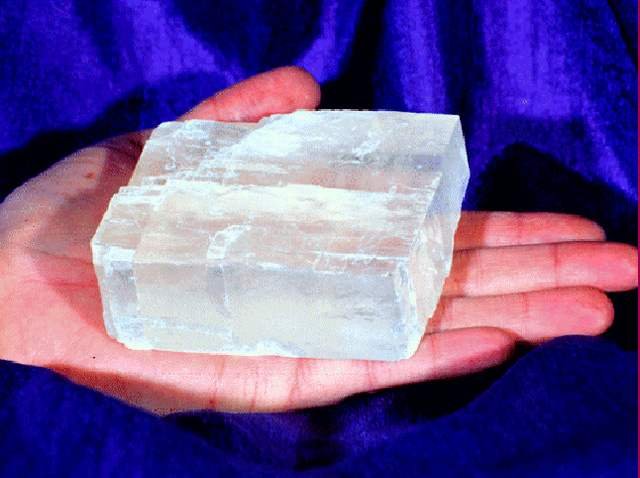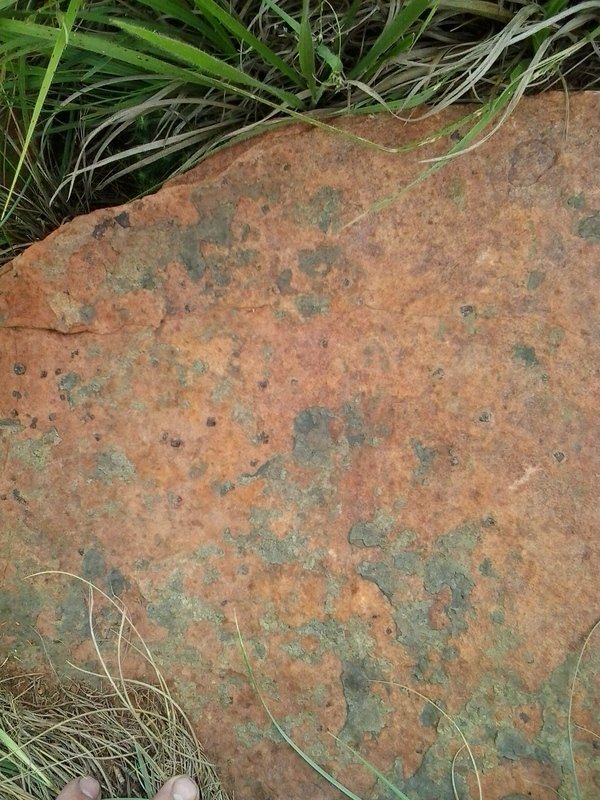Hiking Suikerboschfontein - Part 16 - Salt fossils indicative of Marine deposition
The Quartzites tell their own story...
They start out as massive layers of sand either deposited by water in the sea or by wind in the desert. Beach sand is usually yellow or white and desert sand is reddish. The color of the sandstone usually tell you if the area was originally a sea or a desert.
On this hike the freshly broken quartzite is white... so it comes from the sea but occasionally there are the shapes of salt crystals preserved withing in further confirming a marine origin.
The ghost cubic shapes are preserved where the salt has long since dissolved away.
The red and orange is from later Iron oxides(hematite) staining the rocks(the same as how rust forms), at times when the climate here was tropical, during the ice ages in the northern hemisphere.

Salt crystals that form in a natural setting are called halite and can form beautiful cubes as pictured below.
In the picture above most of the crystals are oriented horizontally but on the far left is the inverted pyramid shape of one angled as in the picture, from the net, below.

They can become quite large. Much larger than the one, from the net, shown below...

In the picture below hematite has actually filled in the casts of the salt crystals to take on new cubic forms.

Thanks for teaching us about mineralogy. I have always been a fan, as far as I can remember of rock, stones, crystals, ... I live on Haida Gwaii where the rock found here is of three different periods of geological times and the variety of them is incredible. Of course, it includes fossils too!
Namaste :)
That's great, you will need to tell us more...
Cool serial @gavvet !
Thanks!
Testing
@normaluser, please show my @elyaque -badges !
@gavvet, your @elyaque -badges:
follower-badge:
http://i.imgur.com/J3Lvoi2.pngreputation-badge:
http://i.imgur.com/RnpMhRI.pngcuration-badge:
http://i.imgur.com/VlShC4S.pngpostcount-badge:
http://i.imgur.com/LgZhbd8.pngsteempower-badge:
http://i.imgur.com/waNlgGC.pngFind all @elyaque -badges here.
Very Impressive...
Impressive series. I look forward to reading more of your work.
.
ColdMonkey mines Gridcoin through generating voluntary BOINC computations for science...
Glad you found it interesting...
Hi @gavvet. Are you a geologist?
You're right. It's of marine origin.
Perhaps, it's a Volcanogenic Massive Sulfide mineral deposit. What you might have hit is a massive quartz which has interstices (ghost cubic shapes) that were once occupied by sulfides (pyrite, chalcopyrite, etc) and then removed due to oxidation (?).
Hematite is another indicator of a mineral deposit. They may have formed from the oxidation of iron-rich sulfides such as pyrite and pyrrhotite.
Hey you have just hit an ore body. Awesome! :)
Aren't those green stuff in the last picture a garnierite/epidote?
Not professionally, but well read on the subject and have done lots of field work.
This is a well studied sedimentary series. There is a good summary of the geology here:
https://en.wikipedia.org/wiki/Magaliesberg
The hematite is from circulation of iron rich ground water and subsequent ferricrete formation under sub-tropical and tropical climate cycles over the last couple of million years.
The green is also just later staining of non-precious opal or other deposits and probably also just more pronounced in this photo.
Ahhh. Wow! And the reason why it turned into a quartzite (metamorphosed sandstone) is because of the pressure applied by the weight of the Bushveld Igenous Complex - quite familiar of this on one of our subjects, and heat.
Exactly.... Closer to the intrusive layers and heat the sandstone has completely melted and re-crystallized and has grains the size of a thumbnail...